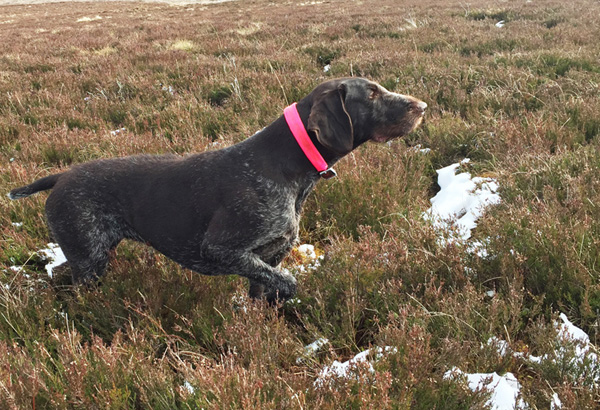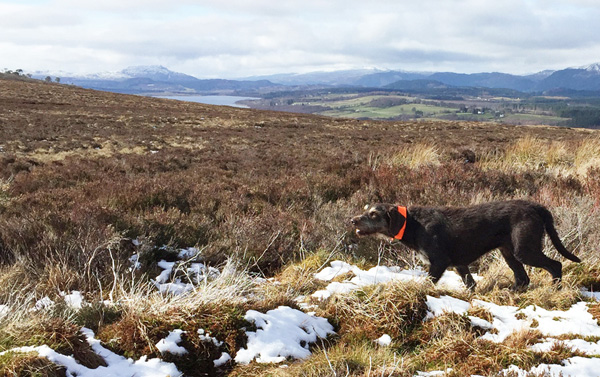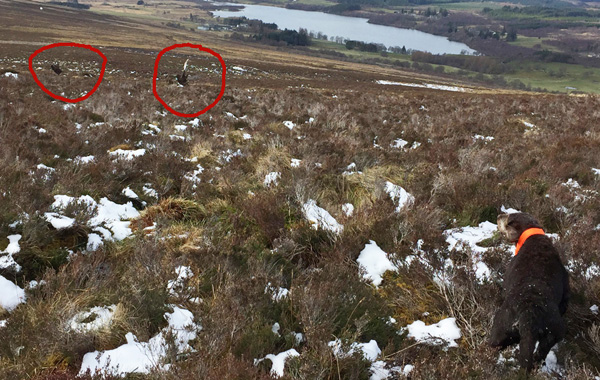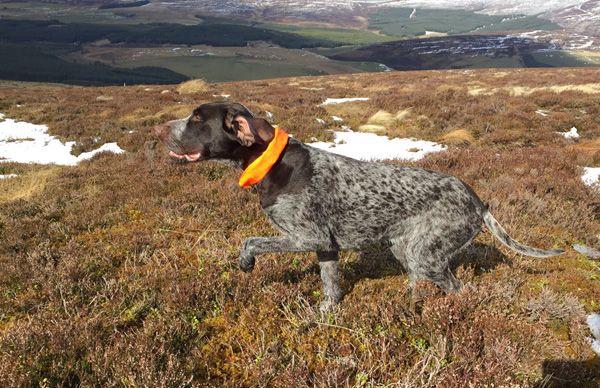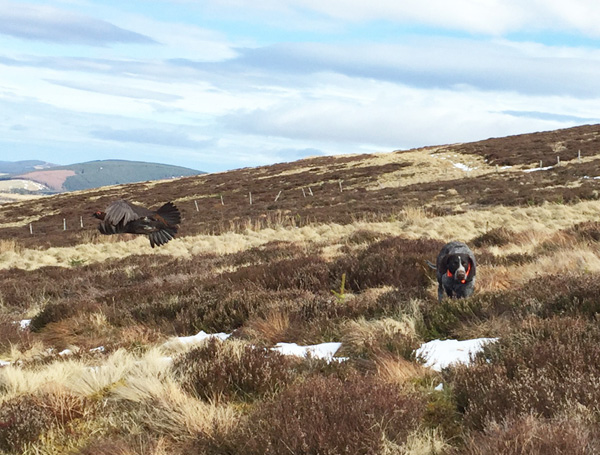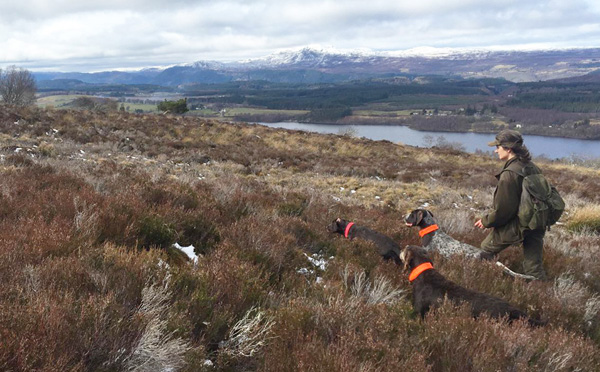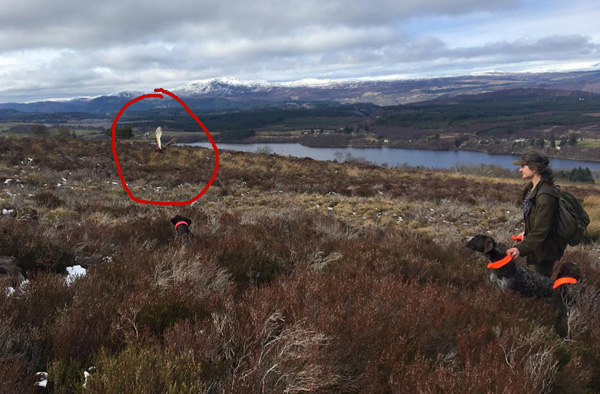How are Grouse Pairs Counted in the Spring?
The year has now come round to the very early spring/end of winter. This is when we go out with the pointers to have a look at what the grouse situation looks like on the grouse moors in Scotland.
We had a dump of snow last Saturday, so it postponed the counting a bit, but we got out on Monday and Tuesday on some of the lower hills.
When the grouse moor estates want to find out how good or bad the stock of grouse is on their hill, there is a good window from middle of March till Middle of April where the grouse has dispersed from spending the winter in large flocks to pairing up in cocks and hens. The pairs settle for a little territory and the cock bird defends it against other intruding cock birds. On a rich and healthy grouse moor the territories are smaller than on a poor moor ground where food is scarce. Where there is a dense grouse population the pairs become extremely territorial because they can’t very easily land anywhere without getting in to trouble with other cock birds, so you can sometimes flush a pair, who will then simply fly over your head and land behind you, very close to where they first sat.
To find out how many potentially breeding pairs you have on a moor, you can either walk in a line of people and dogs and count how many pairs you put up on your way. You would always walk the same ground with the same number of people so that you have a good comparison year by year.
When you count pairs using pointers you also do it systematically and in a way that is a repeat of previous years so you can compare. The pointers range far, crossing the wind, so one pointer dog can cover a far larger beat than one person with his Labrador.
I use German Wirehaired Pointers here and they will run fast and wide, crossing the wind, detecting all smells in their way. When they hit the scent of a sitting grouse in the heather, they quickly come to a stop, on point, downwind from the birds. A trained pointer simply stands rigid on point waiting for his master to turn up. These dogs are trained for hunting and on a shoot day they will eagerly await the arrival of the person carrying a shot gun. They will flush the birds out of the heather and with a little luck one or two will be shot for the dog to retrieve. Obviously there is no hunting happening on a counting day, but the dogs love the action and excitement anyway. It is amazing how these dogs will carry on and on pointing, flushing and running.
Here is Gollum on point.
And here, if you look inside the red rings, is the pair. A cock and a hen.
An experienced dog knows exactly how far he should position himself from the birds in order to ‘hold’ them in place. If he stands too close to the birds, they may lose their bottle and flush before they were meant to and if he stands too far back, they become brave enough to creep away through the heather. It really takes years for a dog to get it right most of the time. My old Gollum has almost become too experienced. He will take stand exactly at the right place in order to put pressure on the birds, so when you get up to him, he has the birds for you. But when you ask him to get in to flush, he runs sideways, scooping a little bit more wind up to make sure that he finds ALL the possible birds. This must be because he has realised that sometimes, when you find a covey of grouse, you can miss one or two sitting a few meters away. So Gollum will show you the main group and then go out to find the rest. It is not disobedience, it is simply experience.
Spring counting, as it is called is a good opportunity to train younger dogs because a few mistakes don’t matter. If the young dog ‘bumps’ a pair of grouse then you can still count them and record them. On a shoot day that is not so ideal.
I was lucky to be on the right side of Pontus when he pointed a pair and I got this photo of both his bird and himself. The other bird flew in the other direction. With only an iphone, it is a bit tricky.
Sometimes you have the dogs pointing and what comes out of the heather is not what you expect. This time it was a big, fat pheasant:
Last year I counted a moor where the dry summer had been exceptionally hard on the grouse. I walked for three hours and the dogs worked their hardest. All together I found one pheasant and two grouse. There should have been lots of coveys of grouse. Very depressing, but the question was where were they all? On Monday, when I counted the same stretch, I found 13 healthy pairs. The birds were back and ready to breed. The mountain (blue) hares were also back. It is amazing how nature survives.
Here at Tuffies we make dog beds for real dogs that are active. Working dogs are seriously active and only the best dog beds will do for them. That is why we know what works.
-
09/02/2019 17:09
Pontus' Hunting Season 2018-19
Many of our customers are following the development of Pontus and I must apologise for the long silence. Pontus is a SLOW developer and it didn't seem as if there was a lot to report during the season, but I have summed .. -
09/08/2019 11:47
Counting and Understanding Grouse moors.
There is a huge amount of emotional debate going on about grouse moors at the moment.While I can understand that shooting does not sit well with some people, it is hugely dangerous when emotions take over at the cost of ..

